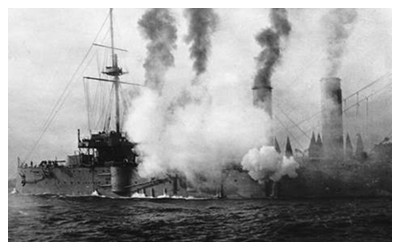Liaoning Province is the closest gateway to the Korean Peninsula. With Shenyang as the capital city, Liaoning is one of the important old industrial bases in China as the equipment manufacturing industry and the raw material industry are relatively developed.
It is also the main transportation route from northeast China to Beijing and a major gateway to opening up.
Facts of Liaoning
Chinese Name: 辽宁 (liáo níng)
Abbreviation: Liao
Population: 43,517,000
Area: 148,000 square kilometers (57,143 square miles)
Location: in the northeast China
Administrative Division: 14 cities (Shenyang, Dalian, Anshan, Fushun, Benxi, Dandong, Jinzhou, Yingkou, Fuxin, Liaoyang, Panjin, Tieling, Chaoyang, Huludao)
GDP (2018): CNY 2,490.95 billion (USD 361.06 billion)
Nationalities: Han, Manchu, Mongol, Hui, Chaoxian, Xibe
 History of Liaoning
History of Liaoning
Archeological evidence establishes that community life existed in Liaoning 5,000 years ago. From its early beginnings through to the mid-20th Century, this place has been sought after as an important trade center, an area that contains rich, untapped resources, and for its strategic position as the Golden Triangle. Liaoning has been the birthplace of warlords and the cradle of the Qing Dynasty. Lasting from 1644 to the 1911 Revolution, this feudal dynasty was set up by invading Manchus. Unfortunately, the Manchus were not the last people to invade this area. Liaoning's often troubled history has given us an interesting legacy of architecture and artifacts, as well as archeological treasures, which combined with its transcendent natural beauty, makes the province an area you will want to visit many times. Below are a few highlights...
History of Liaoning
Geography of Liaoning
Liaoning consists essentially of a central lowland, with Shenyang at its centre, flanked by mountain masses to east and west. A southward extension of the eastern highlands forms the Liaodong Peninsula. There are four main topographical regions: the central plains, the Liaodong Peninsula, the western highlands, and the eastern mountain zone...
Geography of Liaoning
Climate of Liaoning
Temperature extremes and precipitation amounts vary with proximity to the coast. At Dalian (Dairen), at the southern tip of the Liaodong Peninsula, the January mean temperature is 23 °F (−5 °C) and that for July is 74 °F (23 °C); for Shenyang, in central Liaoning, the respective mean temperatures are 10 °F (−12 °C) and 77 °F (25 °C). At Dalian there are about 200 frost-free days, while at Shenyang there are between 160 and 180 frost-free days per year. Precipitation in Liaoning as a whole diminishes consistently from southeast to northwest. Average annual precipitation is about 2 to 40 inches (50 to 1,000 mm), three-fourths of it falling between June and September and almost none from December through February. The summer rainfall is often torrential, but everywhere the scarcity of spring precipitation tends to leave crops short of water...
Liaoning Climate
People in Liaoning
In Liaoning the majority of the population is recorded as Han (Chinese). The bulk of the national minority population is Manchu (Man), located mainly in the eastern part of the province and north of the Liaodong Peninsula, mainly in six Manchu autonomous counties scattered through the region. The second significant minority is that of the Mongols, who are located toward the frontier of the Inner Mongolia Autonomous Region to the west. Broadly speaking, the Hui (Chinese Muslim) minority follows the Manchu in its distribution. There are two autonomous counties representing the Mongolian minority nationality. One is centred on the coal town of Fuxin, and the other is in the southwest at Kazuo. A small Korean minority is located near the Korean frontier.
Apart from the registered minority populations, many of the Han people of modern Liaoning have origins that are wholly or partly non-Han, usually Mongol or Manchu. Many of them are now totally assimilated into the Chinese sector of the population, in language and custom as well as in the adoption of contemporary Han lifestyles.
All the large cities are industrial, and some have experienced spectacular growth since the 1950s. They include Shenyang (Mukden), Dalian, Fushun, and Anshan.
Transportation in Liaoning
The transportation in Liaoning Province is convenient. Four transportation networks including roads, railways, water transportation and civil aviation have been formed. It is very easy for domestic and foreign tourists to enter and leave Liaoning. Liaoning is also the main transportation route from northeast China to Beijing and a major gateway to opening up. The total length of the Liaoning railway has been up to 6,132.4 kilometers (3,810.5 mile) long, ranking first in China. There are many port groups along the coast as well...
Liaoning Transportation
Education in Liaoning
Liaoning’s economically advanced society has developed significant educational and scientific resources. Coverage of nine-year compulsory education had reportedly reached 100 percent of the population in both urban and rural areas by the early 21st century. There are more than 60 universities, colleges, and other postsecondary educational institutions in the province. Notable ones include Dalian University of Technology (1949) and Dalian Maritime University (1953), both in Dalian, and Northeastern University (1923) in Shenyang.
Liaoning Tourism
Liaoning has a number of sites of scenic and historical interest, including three designated by UNESCO in 2004 as World Heritage sites: the Imperial Palace of the Qing dynasty (1644–1911/12) in Shenyang, added to the site (designated 1987) encompassing the Forbidden City in
Beijing; three tombs of
Manchu rulers near Shenyang, also added to an existing site (designated 2000) preserving tombs of the Ming (1368–1644) and Qing dynasties in other provinces; and ruins of one of the capital cities of the ancient Koguryŏ kingdom at Wunu Mountain in eastern Liaoning, which were collectively designated with other Koguryŏ city sites and tombs in neighbouring Jilin province.
In addition, the easternmost section of the extant Great Wall (named a World Heritage site in 1987) runs along the southwestern corner of the province.
 History of Liaoning
History of Liaoning Ask Questions ?
Ask Questions ?